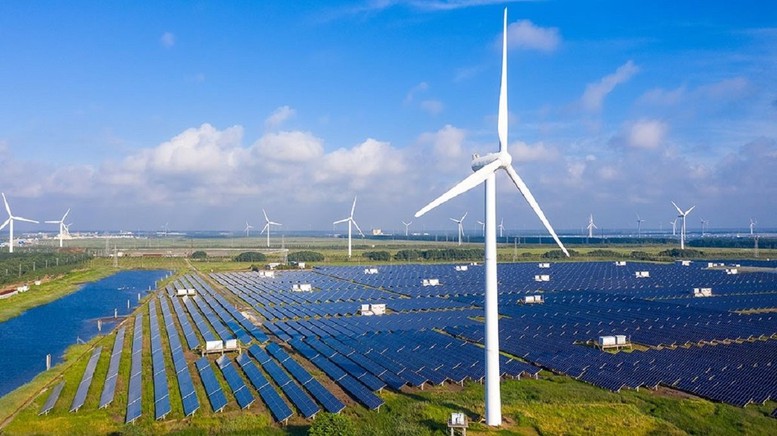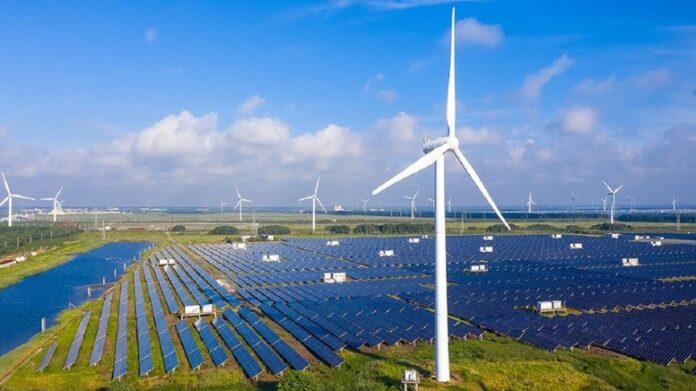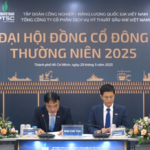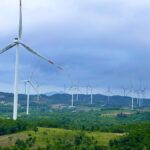
The Ministry of Industry and Trade has issued a Decision approving the Plan for implementing the adjusted Power Development Master Plan VIII
The Plan is designed to concretize Decision No. 768/QD-TTg dated April 15, 2025 of the Prime Minister, aiming to meet the power demand for socio-economic development in each period and ensure that power development stays one step ahead.
According to the Plan, by 2030, the total capacity of LNG power will be 22,524 MW, domestic gas power will be 14,930 MW, coal-fired power will be 31,055 MW, hydropower will range between 33,294 and 34,667 MW, solar power will range between 46,459 and 73,416 MW, and onshore wind power will range between 26,066 and 38,029 MW.
For offshore wind power to meet domestic demand, the target is set at 6,000 MW by 2030 and will increase to 17,032 MW by 2035.
As for the two Ninh Thuan 1 and 2 nuclear power plants, each plant is expected to have a capacity of 2,000 to 3,200 MW and is scheduled to be operational between 2030 and 2035.
Meanwhile, power generation from biomass, waste, and excess heat from industrial processes is also encouraged, with a total biomass power capacity of 1,523 to 2,699 MW and a capacity of 1,441 to 2,137 MW for power produced from waste and solid waste.
By 2030, the total capacity of energy storage batteries is expected to reach approximately 10,000 to 16,300 MW. The development of centralized solar power must be combined with the installation of energy storage systems, with a minimum ratio of 10% of capacity and storage of 2 hours.
Importing electricity from countries with high hydropower potential
As per the Plan, Vietnam will boost electricity imports from countries with high hydropower potential. By 2030, the total import capacity from Laos is expected to reach approximately 9,360 to 12,100 MW, based on bilateral cooperation agreements between the two governments. Additionally, there are plans to utilize the potential for importing electricity from China, with a reasonable scale and in accordance with connection conditions. If favorable conditions and reasonable prices are met, it is possible to increase the maximum scale or advance the timeline for importing electricity from Laos to the northern region.
On the other hand, electricity export is also identified as a new spearhead in regional economic cooperation. By 2030, Vietnam aims to increase its electricity export capacity to Cambodia to approximately 400 MW.
By 2035, the capacity to export electricity to potential markets such as Singapore, Malaysia, and some other partners in the region could reach 5,000 to 10,000 MW, and this scale is expected to be maintained at a minimum of 10,000 MW by 2050. This export level can be adjusted higher depending on the actual demand of the importing side, ensuring economic efficiency, national energy security, and national defense and security.
To facilitate electricity exports and the production of new energy, the Ministry of Industry and Trade has identified potential areas in the central and southern regions, with an export scale of 5,000 to 10,000 MW.
Using renewable energy to produce new types of energy (such as green hydrogen and green ammonia) to serve domestic needs and exports: Priority will be given to development in areas with good renewable energy potential and favorable power grid infrastructure; the development scale aims to reach 15,000 MW (mainly from offshore wind power).
The Ministry will submit to the competent authorities for consideration the policy of exporting electricity according to specific projects, ensuring compliance with the current legal regulations.
Proposal to build 2 inter-regional renewable energy industry and service centers
Accordingly, the northern center will be located in localities such as Hai Phong, Quang Ninh, and Thai Binh, with the potential for expansion to neighboring areas in the future. This center will include factories for manufacturing equipment for wind and solar power, logistics services, and specialized ports to support the construction, operation, and maintenance of renewable energy projects.
In addition, there will be green industrial parks with low carbon emissions and research and training facilities for specialized human resources in the field of clean energy.
Similarly, the southern center is expected to be located in Ninh Thuan, Binh Thuan, Ba Ria-Vung Tau, and Ho Chi Minh City, which have superior potential for wind and solar power and port infrastructure.
The development model here is similar to that of the northern center, aiming to build a complete value chain for the renewable energy industry in the south.
Unveiling the Revised Power Development Master Plan
The dynamic development of domestic power sources is pivotal, and the Amended Power Development Plan 8 provides a clear strategic direction for electricity import and export within the ASEAN region and the Greater Mekong Subregion.
“Offshore Wind Power: Unlocking Decades of Revenue Potential”
The Annual General Meeting of the Vietnam Petroleum Technical Services Joint Stock Corporation (PTSC) revealed an exciting initiative on May 29. PTSC is currently developing a large-scale offshore wind power complex, with ambitions to supply electricity from Vietnam to Singapore and Malaysia. This venture is estimated to surpass a staggering $10 billion in total investment.
Deploy Synchronized Solutions to Achieve Renewable Energy Growth as per the Power Development Plan VIII
The transition to green energy is a challenging journey that demands a collective vision and commitment from governments, businesses, citizens, and the global community. It requires a unified effort to pave the way for a sustainable future, where we can harness the power of renewable sources and secure a cleaner, greener tomorrow. This journey is not without its obstacles, but with dedication and collaboration, we can overcome these hurdles and forge a path toward a brighter, more sustainable world.
Crafting a Compelling Narrative: Vietnam Seeks Nearly 4,000 Elite Professionals for its National Endeavor
This project is slated to be operational by 2030, with a latest launch date of late 2031, to ensure economic and societal development.





















